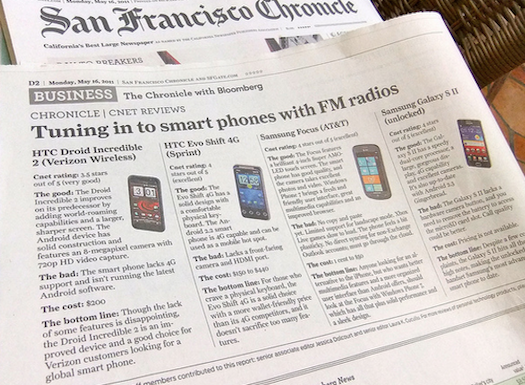The latest in our series about the future of radio: Radio Tomorrow, with James Cridland.
I’ve been to Mumbai in India a few times now, seeing Radio Mirchi, one of the most successful radio operators there. India’s had an explosion of new FM radio stations, and is about to have plenty more added to the market.
Let me tell you something about Indian radio that might hurt your head. According to the last stats I saw (from 2011), 94% of all radio listeners in Mumbai listen on… their phone. Using the FM tuner that almost every phone has there. 94%. Wow.
Perhaps this is behind the long, slow fight that radio broadcasters have had in the US, trying to get cellphones to have their FM tuner chip activated. Broadcasters believe that FM radio inside a mobile phone will lead to almost Indian levels of listening. But, perversely, the more you spend on a mobile phone in the US, the less likely it is that it’ll have an FM tuner inside.
People point to the network operators, and Apple, being to blame. The network operators clearly want you to buy more data, so why enable something that circumvents that? And Apple? Well, they’re Apple.
That’s the obvious answer; but I think there’s a better answer: and that’s one that hurts a bit.
FM radio on a mobile phone isn’t actually very good.
Wait, woah, hold it, let me explain, put those pitchforks away.
FM radio on a mobile phone is bloody good. It’s 7 times better for your battery than streaming. It doesn’t care about network congestion and cellular dead zones. It doesn’t cost you any money on your data plan. It sounds great too.
But, let’s face it. Telling people to tune into random numbers to listen, providing no artwork, not working inside the shopping mall, no way to contact the station, little or no details about what you’re listening to… by comparison to every other source of audio entertainment on your phone, it’s a user experience disaster.
This is one of the times that the US is leading the world, with the NextRadio app. If you’ve not seen it, you should – all of a sudden, FM radio has great interface, detailed now-playing information, logos for station tuning and a bunch more functionality: but still using FM radio to deliver the audio.
In Europe, there are some Samsung phones that can automatically flick between the FM signal and the signal over the internet in case your signal goes, too: and, more importantly, back to FM again. They add images and now-playing information, too, as well as a full program guide (no more guessing when Wait Wait Don’t Tell Me is on).
It’s not enough to be just wanting FM radio in a mobile phone. We should be pushing for a really good radio experience in a mobile phone: which includes FM (and HD probably too), but also makes radio as app-like an experience as possible.
Let’s make sure that we work together as one radio industry to get the FM user experience right on mobile; and the cellphone companies will be falling over themselves to enable it.
Read all James’ columns in the Radio Tomorrow section of our site.
 James Cridland is a radio futurologist, and is Managing Director of media.info, a companion website to radioinfo and AsiaRadioToday.
James Cridland is a radio futurologist, and is Managing Director of media.info, a companion website to radioinfo and AsiaRadioToday.
He has served as a judge for a number of industry awards including the Australian ABC Local Radio Awards, the UK Student Radio Awards, and the UK’s Radio Academy Awards, where he has also served on the committee. He was a founder of the hybrid radio technology association RadioDNS.
James is one of the organisers of nextrad.io, the radio ideas conference each September, and is also on the committee of RadioDays Europe. He writes for publications including his own media.info, Radio World International and RAIN News.
James lives in North London with his partner and a two year-old radio-loving toddler. He very, very much likes beer.
Radio Tomorrow is a trade mark of Radioinfo Pty Ltd

